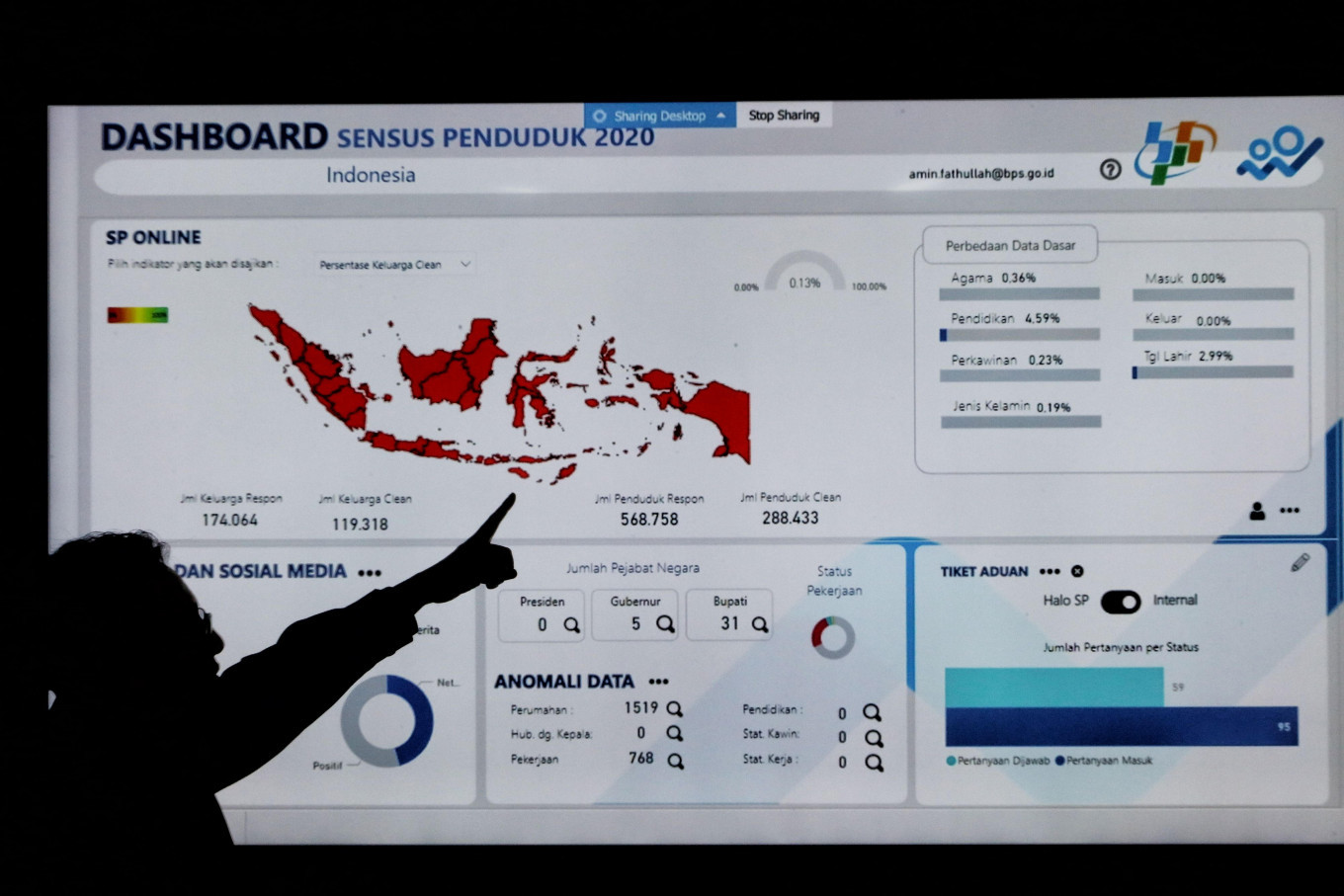Popular Reads
Top Results
Can't find what you're looking for?
View all search resultsPopular Reads
Top Results
Can't find what you're looking for?
View all search resultsDeclining population in Asia and the Pacific affects labor supply
When the number of the productive-age population is not enough for achieving a high productivity, the governments and companies need elderly workers to continue working.
Change text size
Gift Premium Articles
to Anyone
 Statistics Indonesia (BPS) staff activity at the 2020 population cencus call center room in Jakarta, on February 17, 2020 .The population census which occurs every 10 years aimed to update data of the country’s demographics, which are crucial to supporting certain policy interventions and will combine door-to-door interviews and data gathering and online submission This methods is the first time used in Indonesia. (JP/Seto Wardhana)
Statistics Indonesia (BPS) staff activity at the 2020 population cencus call center room in Jakarta, on February 17, 2020 .The population census which occurs every 10 years aimed to update data of the country’s demographics, which are crucial to supporting certain policy interventions and will combine door-to-door interviews and data gathering and online submission This methods is the first time used in Indonesia. (JP/Seto Wardhana)
A
sia and the Pacific is the largest region in the world in terms of both geographic and population sizes. A declining population and an increasing number of aging population in Asia and the Pacific affect the world’s labor supply.
According to the United Nations, family size in East Asia has dropped to 1.7 children per a woman while family size in South Asia is remaining at 2.5 children per a woman.
In the labor market (also referred to as the job market), employees and job seekers provide labor supply while employers provide labor demand. A true understanding of future labor supply will enable governments and companies to deal with obstacles to sustaining a sufficient labor pool.
Two major challenges of labor supply in Asia and the Pacific in the near future are as follows:
Firstly, there will be the reduction of productive-age population (or working age population). Even though the young generation in many countries (e.g. China, India, Malaysia, Indonesia, Thailand, Singapore, and the Philippines) has been promoted to acquire the skills demanded for future work (e.g. 21st century skills), the stock of human capital is still insufficient to replace the older population.
In past few decades, East Asian and ASEAN countries have potential to attract multinational corporations, especially in manufacturing sector. Since the reduction of working age population in the region has an impact on productivity, there will probably be an increasing use of robots and artificial intelligence (AI) in industries.
Therefore, employees must adapt to new technological environment. They should be ready to work with robots and AI. Meanwhile, they also have to learn the particular skills (e.g. critical thinking and complex problem-solving skills) which cannot be replaced by AI.
Considering the quality of human capital in the region, Singapore is a good example of high quality education system that emphasizes skills needed for future jobs such as analytical skills, teamwork, and creativity skills. It can be said that the skills of workforce depend on the development level of each country.
Second, the number of elderly workers will be increased. When the number of the productive-age population is not enough for achieving a high productivity, the governments and companies need elderly workers to continue working. But elderly workers may lack the skills required in the 21st century (e.g. technological skills). They need to be trained to master such skills. Companies should invest in training elderly workers to gain a sufficient number of competent employees.
However, a study of labor supply of older people in Thailand funded by Asian Development Bank Institute found that older people with sufficient pensions are less likely to continue working while those older people in the informal sector (without pensions) tend to remain in the labor market to earn income for living. This phenomenon may occur in other Asian countries as well.
The governments in Asia and the Pacific should pay attention to future labor supply by formulating and implementing the policies regarding older workers (e.g. wage and benefits, training and development, work environment, etc.).
In the same manner, they should put an effort into improving skills of the young generation matched with future demand.
***
Phathara-on Wesarat is assistant professor and Anlaya Smuseneto is associate professor, Faculty of Humanities and Social Sciences, Prince of Songkla University (Pattani Campus), Thailand.










